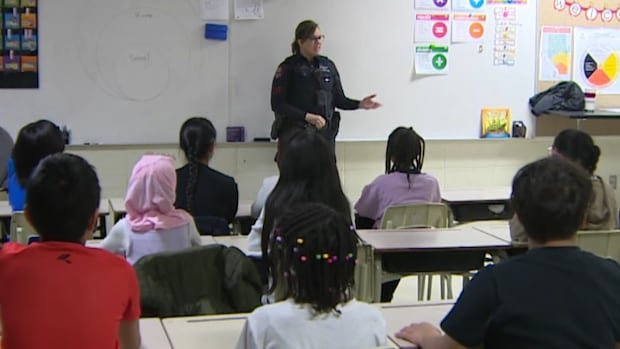Principal Heather Brown of a high school in Saanich, B.C., is pleased to see police officers returning to Greater Victoria School District 61 this autumn. Two years ago, the school board terminated its School Police Liaison Officer (SPLO) program, leaving Brown with a sense of loss despite having emergency access to police. Previously, she collaborated with SPLOs to guide students involved in gang activities, successfully extracting some teens with the help of family and community support. In the absence of SPLOs, Brown found it challenging to work with police who lacked the same level of connection with her and the youth.
In recent years, many Canadian schools phased out programs that stationed police officers on their premises due to concerns about student discomfort and intimidation. However, with rising reports of violence in schools, there is a resurgence of these programs, sparking mixed reactions. The focus now is on building relationships between police officers and students to foster trust and confidence, according to Chief Constable Dean Duthie of the Saanich Police Department.
Critics, like Calgary parent Michelle Robinson, question the depth of these relationships, highlighting concerns about limited officer presence and inadequate relationship-building efforts across multiple schools. Robinson, a member of the Yellowknife Dene First Nation, criticized the fear, mistrust, and surveillance she observed when police officers were present at her daughter’s high school.
While some advocate for the return of police officers in schools, others, such as community advocate Andrea Vásquez Jiménez, argue for alternative approaches, emphasizing the need for increased funding in education and community resources to address violence at its roots. Vásquez Jiménez and others believe that healthy communities require more support and resources rather than relying on policing measures.
Researcher Temitope Oriola from the University of Alberta highlights the mixed perceptions of School Resource Officer (SRO) programs, noting that BIPOC students and caregivers often report negative impacts compared to their Caucasian counterparts. Despite the popularity of these programs, Oriola’s forthcoming study suggests a lack of evidence linking SRO programs to enhanced school safety. He emphasizes the need for greater oversight and transparency in these programs.
Lisa Gunderson, a parent in Victoria, stresses the importance of police officers building relationships with communities to bridge existing conflicts, especially in schools. Continuous collaboration and feedback, along with enhanced training for officers, are crucial in revitalizing programs like the SPLO initiative in Greater Victoria School District 61. Students like Aaria Haji from Toronto share positive experiences of officers engaging with their schools, showcasing the potential for officers to positively impact student behavior and school environments.
Overall, the debate surrounding the reimplementation of police officer programs in schools highlights the need for thoughtful consideration, community engagement, and alternative strategies to ensure the safety and well-being of students.
